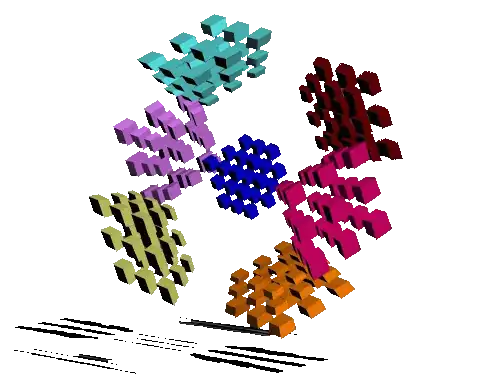I love solving Rubik's cube (the usual 3D one). But, a lecture by Matt Parker at the Royal Institute (YouTube Link) led me to an app that can simulate a four dimensional rubik's cube. But unfortunately it was so complex, that I soon got bored as I failed to solve it.
The website to the 4D cube : http://superliminal.com/cube/cube.htm
Following which today, I also found an app that can simulate a 5D cube!!
The website to the 5D cube: http://www.gravitation3d.com/magiccube5d/
So, my two questions are :
- Is there a general (non brute-force) algorithm that can be used to solve a well-scrambled cube of any dimension (even though it may not be very efficient, but yet is not a simple search over all the available space of move sequences) ? [Point modified after reading @RavenclawPrefect's answer :D ]
- Mathematically, what is common in all these cubes, and "hypercubes"?
NOTE: By dimensions I mean physical dimension and not the number of rows of pieces on a face of the cube. So a four-dimension cube is a cube in x,y,z,$\delta$ dimensions where $\hat x,\hat y,\hat z,\hat \delta$ are mutually orthogonal unit vectors in the respective dimensions.
For example, here is how the aforementioned 4D cube moves: https://miro.medium.com/max/2552/1*ga32DoV_Hc6e8t6PC1hFHw.gif
Addendum:
List of resources that may help finding an answer to this question:

